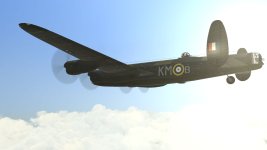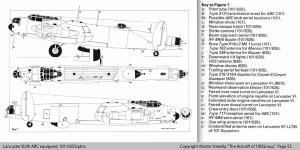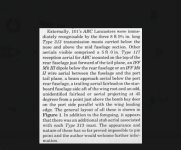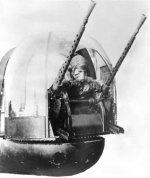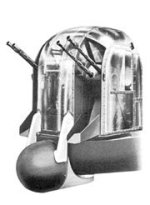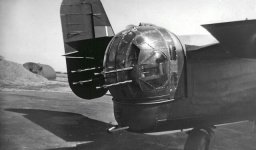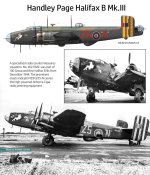-
There seems to be an uptick in Political comments in recent months. Those of us who are long time members of the site know that Political and Religious content has been banned for years. Nothing has changed. Please leave all political and religious comments out of the forums.
If you recently joined the forums you were not presented with this restriction in the terms of service. This was due to a conversion error when we went from vBulletin to Xenforo. We have updated our terms of service to reflect these corrections.
Please note any post refering to a politician will be considered political even if it is intended to be humor. Our experience is these topics have a way of dividing the forums and causing deep resentment among members. It is a poison to the community. We appreciate compliance with the rules.
The Staff of SOH
You are using an out of date browser. It may not display this or other websites correctly.
You should upgrade or use an alternative browser.
You should upgrade or use an alternative browser.
And the winner is...
- Thread starter NachtPiloten
- Start date
Motormouse
SOH-CM-2025
Appears to have a ventral turret where the gee/oboe antenna normally is
Ttfn
Pete
Ttfn
Pete
Pat Pattle
SOH-CM-2025
Well, never knew about that, nice to learn something new!
Also fitted to the
Manchester too, apparently.

Also fitted to the
Manchester too, apparently.

Led Zeppelin
Charter Member
Was this just a test that has never reached production or a field modification by a squadron ground crews themselves?
Bravo/4
Charter Member
Wasn't very effective, and dropped pretty quickly. Aimed with a periscope as Tom pointed out, which you can imagine was pretty useless in the dark!
It did make a brief re-appearance when the Luftwaffe introduced their Schräge Musik, but again was pretty ineffective. Then dropped completely with the introduction of the radar dome.
It did make a brief re-appearance when the Luftwaffe introduced their Schräge Musik, but again was pretty ineffective. Then dropped completely with the introduction of the radar dome.
Fn64
John is correct, there were about 60 fitted in the early mark 1's. It rotated 180 degrees and was manned by a crew member who was available.... It was also reintroduced in '44 but again found to be of very limited use. I did not spend much time on it so don't expect much in the way of view. Simple periscope sight. Halifaxes had one also. Again it was determined not to be of much benefit....
John is correct, there were about 60 fitted in the early mark 1's. It rotated 180 degrees and was manned by a crew member who was available.... It was also reintroduced in '44 but again found to be of very limited use. I did not spend much time on it so don't expect much in the way of view. Simple periscope sight. Halifaxes had one also. Again it was determined not to be of much benefit....
Led Zeppelin
Charter Member
Thanks for the answers, never heard about it before.
RAF bombers defense was really not efficient at this time with those 7.7mm guns so what could they have expected from that turret opertated with a periscope and fitted with such useless weapons?
RAF bombers defense was really not efficient at this time with those 7.7mm guns so what could they have expected from that turret opertated with a periscope and fitted with such useless weapons?
flashgordon
Charter Member
I believe 1 Group retained the ventral turret far longer than other Groups. This Groups aircraft also carried a gas dtection patch as they had the role of delivering chemical weapons had the war got to that point.
Other interesting additions to British heavy bombers that would be interesting to see would be the 8' 9" aerials for 'Airborne Cigar', the Rose turret with 2 x .5inch MGs, 'Village Inn' AGLT (Automatic Gun Laying Turret and the 'Monica' night fighter detection radar.
Other interesting additions to British heavy bombers that would be interesting to see would be the 8' 9" aerials for 'Airborne Cigar', the Rose turret with 2 x .5inch MGs, 'Village Inn' AGLT (Automatic Gun Laying Turret and the 'Monica' night fighter detection radar.
Attachments
flashgordon
Charter Member
180 Rose turrets were fitted to Lancasters before the end of the war, mainly in 1 Group but some to 5 Group.
Bomber Command recognised that the .303 was inadequate by 1942 and wanted a twin 20mm canon mid upper turret and a twin .5 calibre Browning one to the rear. The Air Ministry design program was slow (neither reached wartime installation) so a frustrated Arthur Harris, with the threat of political cancellation of his Berlin and Ruhr bombing campaigns due to the nightly loss of dozens of aircraft and hundreds of aircrew. approached private industry in 1943.
The Rose Brothers refused MAP assistance and took advice from Air Vice Marshall Edward Rice, a senior Bomber Command Station commander who subsequently led 1 Group. Initial problems with poor quality base rings overcome, the turrets started to be fitted to 101 Squadron aircraft from May 1944 (before final design approval). The guns suffered from frequent stoppages due to belt feed problems but the roomy design and improved visibility resulted in threats being spotted sooner allowing evasive action to be taken.
101 Squadron was switched to the ECM mode in October 1943 with new Lancasters fitted with 'Airborne Cigar'. These had high powered transmitters and an extra German speaking crew member who searched the night fighter radio channels. Interference and confusing commands were then broadcast. 101 aircraft went out virtually every night spaced along the bomber stream. The squadron grew to some 40 operational aircraft but lost some 145 as their broadcasts allowed fighters to home on them. Airborne Cigar was also fitted to 214 squadron B-17s and 462 Squadron Halifaxes.
The large numbers of downed bombers allowed the Germans to rapidly reinstate working examples of new defence and navigation aids and reverse engineer them to allow their fighters to detect and track allied aircraft. The RAF was horrified when a Ju 88G-1 landed at RAF Woodbridge (navigation error!) in July 1944 and was found to have detection equipment for both HS2 and Monica. The Germans were monitoring the HS2 pulses as the bomber stream formed up over England allowing them them to prepare their defence response although the aircraft based detector were not accurate enough to track individual aircraft. The rear facing Monica radar was supposed to alert the crew to fighters but could not differentiate between friend and foe so some turned it off to stop the constant beeping from other bombers in the stream. Those that didn't were giving out a tracking signal to enemy fighters resulting in many losses. Monica was removed whilst crews were instructed not to turn on HS2 until over occupied territory following the discovery..
Bomber Command recognised that the .303 was inadequate by 1942 and wanted a twin 20mm canon mid upper turret and a twin .5 calibre Browning one to the rear. The Air Ministry design program was slow (neither reached wartime installation) so a frustrated Arthur Harris, with the threat of political cancellation of his Berlin and Ruhr bombing campaigns due to the nightly loss of dozens of aircraft and hundreds of aircrew. approached private industry in 1943.
The Rose Brothers refused MAP assistance and took advice from Air Vice Marshall Edward Rice, a senior Bomber Command Station commander who subsequently led 1 Group. Initial problems with poor quality base rings overcome, the turrets started to be fitted to 101 Squadron aircraft from May 1944 (before final design approval). The guns suffered from frequent stoppages due to belt feed problems but the roomy design and improved visibility resulted in threats being spotted sooner allowing evasive action to be taken.
101 Squadron was switched to the ECM mode in October 1943 with new Lancasters fitted with 'Airborne Cigar'. These had high powered transmitters and an extra German speaking crew member who searched the night fighter radio channels. Interference and confusing commands were then broadcast. 101 aircraft went out virtually every night spaced along the bomber stream. The squadron grew to some 40 operational aircraft but lost some 145 as their broadcasts allowed fighters to home on them. Airborne Cigar was also fitted to 214 squadron B-17s and 462 Squadron Halifaxes.
The large numbers of downed bombers allowed the Germans to rapidly reinstate working examples of new defence and navigation aids and reverse engineer them to allow their fighters to detect and track allied aircraft. The RAF was horrified when a Ju 88G-1 landed at RAF Woodbridge (navigation error!) in July 1944 and was found to have detection equipment for both HS2 and Monica. The Germans were monitoring the HS2 pulses as the bomber stream formed up over England allowing them them to prepare their defence response although the aircraft based detector were not accurate enough to track individual aircraft. The rear facing Monica radar was supposed to alert the crew to fighters but could not differentiate between friend and foe so some turned it off to stop the constant beeping from other bombers in the stream. Those that didn't were giving out a tracking signal to enemy fighters resulting in many losses. Monica was removed whilst crews were instructed not to turn on HS2 until over occupied territory following the discovery..

